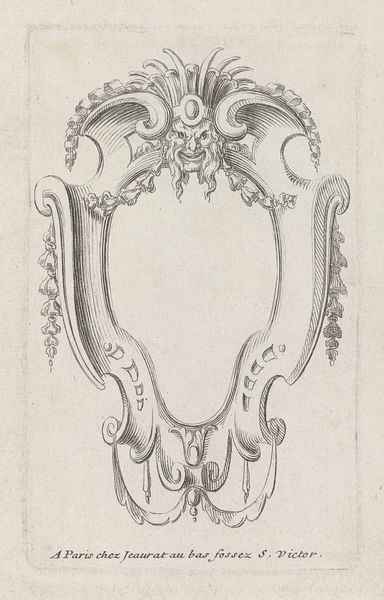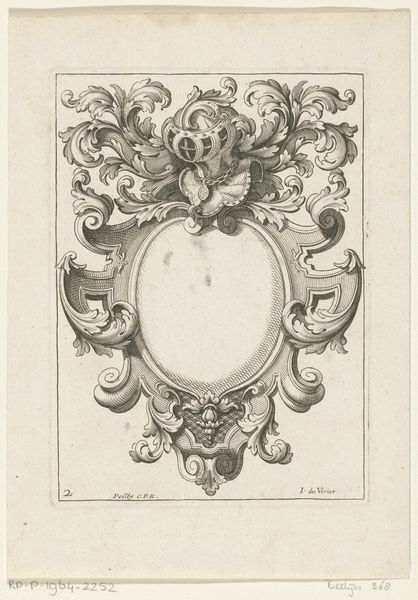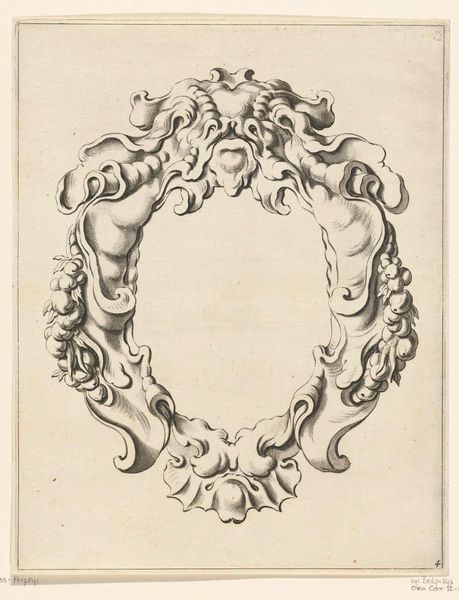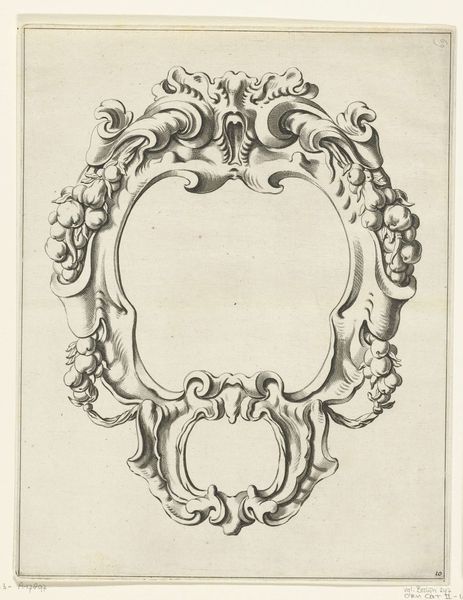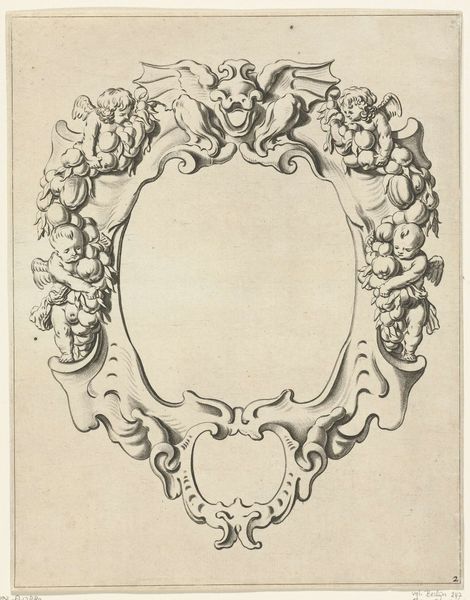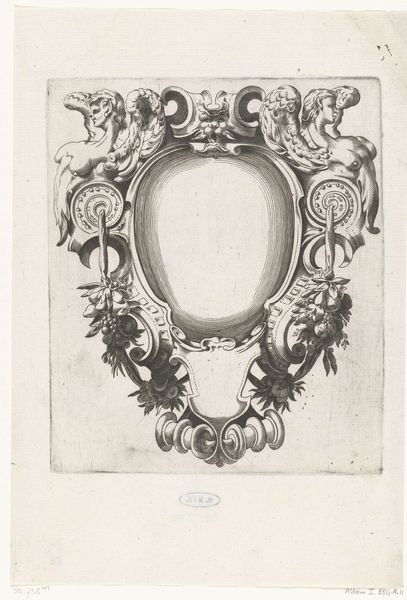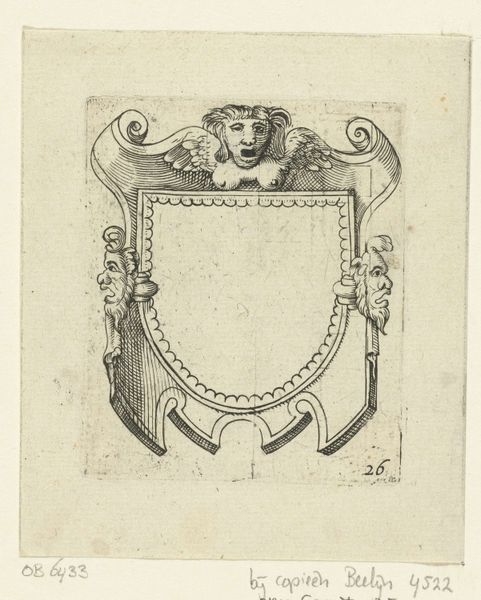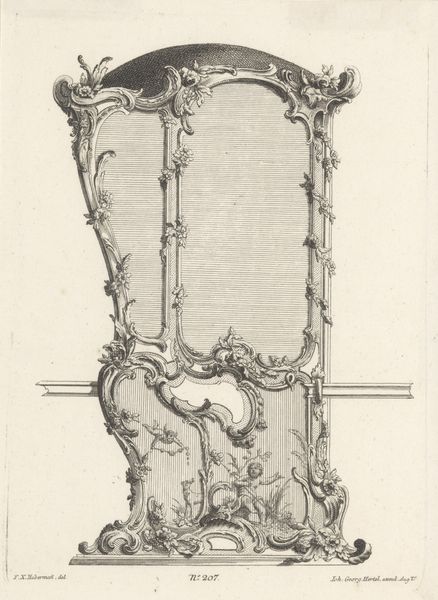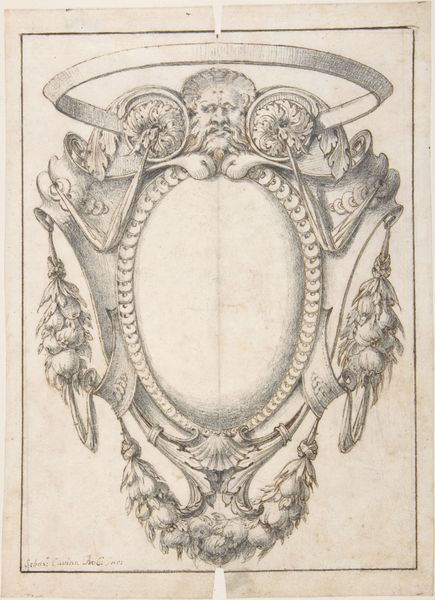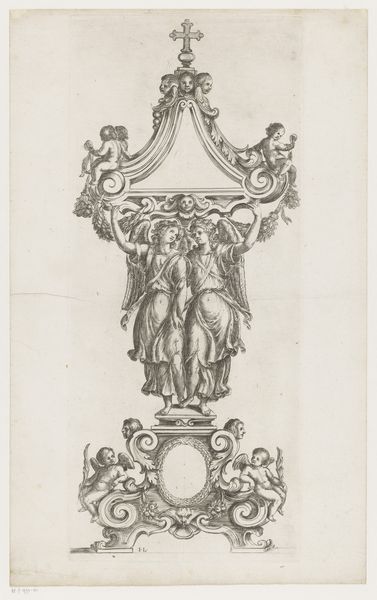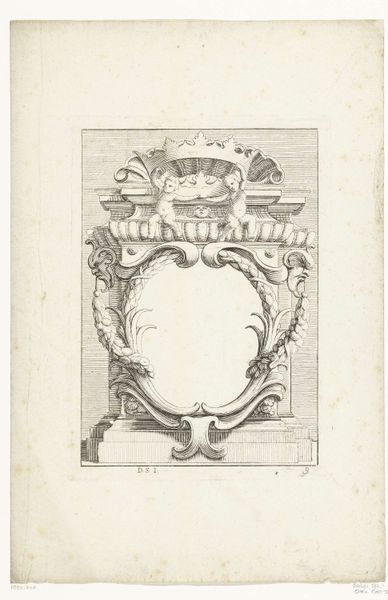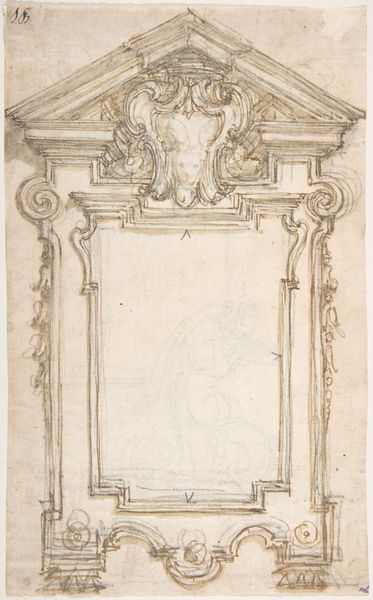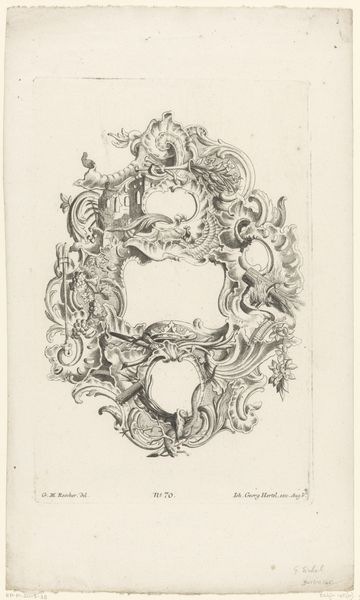
drawing, ink
#
drawing
#
allegory
#
baroque
#
pen drawing
#
mechanical pen drawing
#
pen illustration
#
pen sketch
#
figuration
#
personal sketchbook
#
ink
#
ink drawing experimentation
#
pen-ink sketch
#
pen work
#
sketchbook drawing
#
sketchbook art
Dimensions: height 154 mm, width 114 mm
Copyright: Rijks Museum: Open Domain
Editor: This drawing, "Cartouche met twee putti met een draperie," is attributed to Pieter Jansz. and was created sometime between 1630 and 1672 using ink. I’m immediately struck by the delicate lines and the overall sense of balance in the composition. What elements of its structure stand out to you? Curator: Certainly. The artwork operates on a formal level through a dynamic interplay of symmetry and asymmetry. Observe how the cartouche itself provides a central, oval void, anchored by symmetrical putti. However, the drapery introduces an element of controlled chaos, disrupting the rigidity of the frame. This tension generates visual interest. Note how Jansz. used a limited tonal range. Why do you think the artist restricted his palette? Editor: Maybe to emphasize the line work, or to highlight the textural variations within the drapery? It does seem like he was really interested in the play of light and shadow across the folds of the fabric. Curator: Precisely. The modulation of light and shadow gives depth to the seemingly flat surface, enhancing its illusionistic qualities. Consider, too, how the blank cartouche serves as a semiotic marker, suggesting an absent heraldry or inscription, and inviting the viewer to complete the narrative. What impact does this have on you? Editor: It's fascinating. The void almost becomes the focal point. So, even without knowing the historical context, we can analyze how the drawing creates meaning through its own internal relationships. I never thought about a blank space as a key structural element! Curator: Indeed. Formal analysis enables us to decode visual strategies. Even without definitive historical context, we've accessed core qualities embedded within the drawing's formal arrangements. Editor: That's a really insightful perspective. I'll definitely be thinking more about the formal elements in artworks from now on!
Comments
No comments
Be the first to comment and join the conversation on the ultimate creative platform.
